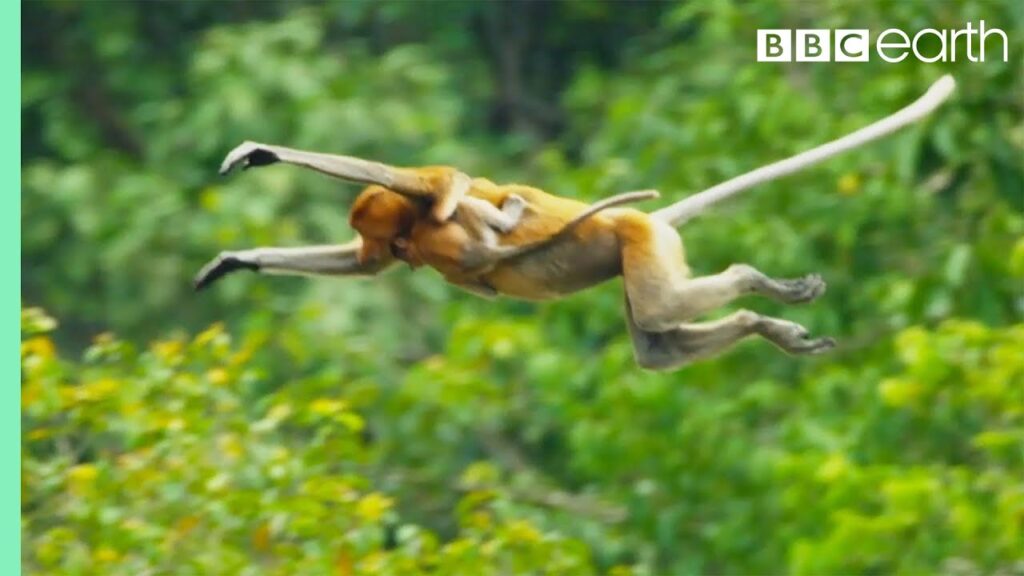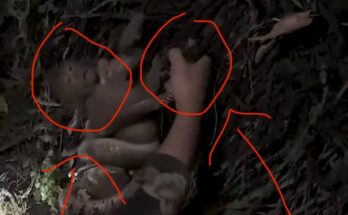
For proboscis monkeys, rivers are not just part of their habitat; they are obstacles that must be faced daily. These waterways separate feeding grounds, sleeping sites, and safe areas from predators like clouded leopards. To survive, the monkeys must leap into waters teeming with saltwater crocodiles, some of the most powerful and dangerous reptiles on Earth.
The scene begins high in the canopy, where a troop gathers near the edge of the forest. Their bellies full from feasting on young leaves and unripe fruit, they prepare to move. Across the river lies their next destination. The troop scans the water below—its surface calm, but deceptively so. Beneath the rippling current, massive crocodiles wait with patience and precision.
The monkeys chatter nervously, their calls echoing through the forest. Youngsters cling tightly to their mothers, wide-eyed with fear. Adult males, with their long noses drooping dramatically, watch carefully, assessing the safest route. The tension builds.
Then, suddenly, one brave monkey makes the first move. With a powerful push from the branch, it launches itself into the air, limbs outstretched in an astonishing leap. For a moment, the monkey seems to fly, suspended between danger and safety. It hits the water with a splash and begins swimming frantically to the far bank. The rest of the troop, encouraged by the daring leap, follows one after another in quick succession.
The water churns as monkeys dive in. Some leap gracefully, while others hesitate, splashing clumsily. The crocodiles, alerted by the commotion, stir from their stillness. A ripple here, a shadow there—the threat is real. One massive reptile surges forward, jaws opening with terrifying speed. A monkey only narrowly escapes, scrambling out of the water as the crocodile’s teeth snap shut just inches away.
This deadly game of survival is repeated countless times in the monkeys’ lives. For them, the risk is unavoidable. Their bodies, however, are built for it. Proboscis monkeys are surprisingly strong swimmers. With partially webbed feet and hands, they cut through water efficiently, often diving below the surface to evade danger. This ability gives them an edge, but the threat of crocodiles never disappears completely.
Why risk it at all? The answer lies in survival. The riverbanks provide abundant food sources and safe resting sites, but no single area is enough to sustain a troop long-term. To thrive, they must move, and moving means crossing. It is a gamble they cannot avoid.
For human observers, these dramatic leaps are breathtaking—part acrobatics, part desperation, all driven by instinct. Watching a troop of proboscis monkeys leap into crocodile-infested waters is a reminder of the constant dangers animals face and the incredible adaptations they have developed to endure them.
It is also a lesson in courage. Each leap is not only an act of survival but also a demonstration of trust—the trust that the troop places in its leaders, and the trust each monkey has in its own abilities. Life in the wild is unforgiving, but the proboscis monkey shows us that sometimes, survival requires taking the leap, no matter how dangerous.
The mangroves echo once more with the chatter of a reunited troop on the far bank. They shake off water, groom each other, and settle back into the routine of feeding. The river, calm once again, hides its predators beneath the surface, waiting for the next crossing.


